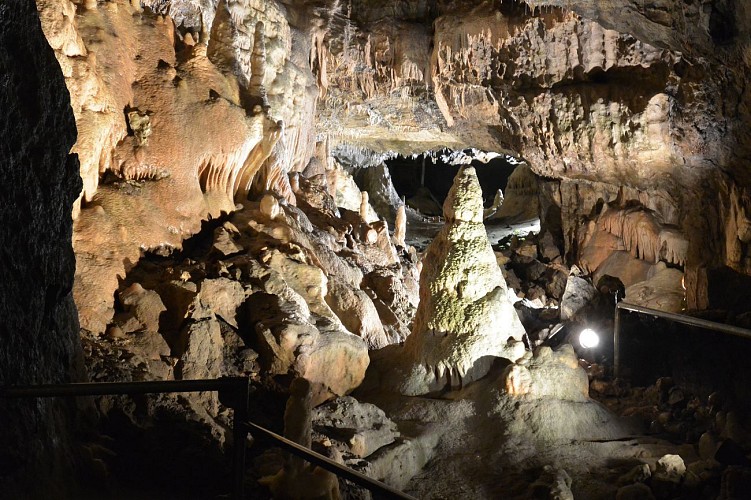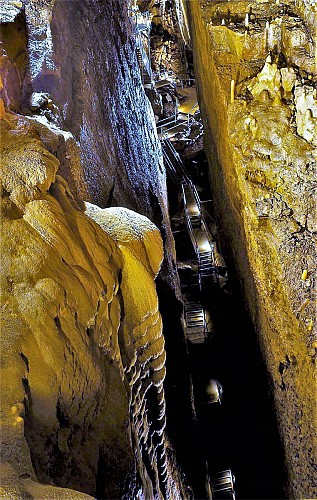Alert
Alerts
The Hotton Caves



Description
The Caves of Hotton were discovered by chance in 1958 in the eastern working face of the Hampteau quarry when blasting uncovered a highly concretionary underground gallery. This gateway to a vast underground network of caves marked the beginning of a long history of speleological exploration and scientific study that culminated in the founding of a company to exploit the tourist potential of part of the network. This meant that a new entrance had to be created on the plateau, and the quarry had to be closed, since it was demolishing the finest chambers. The Caves of Hotton now consist of 5km of galleries, through which an underground river runs, and a drop of 70 metres. The river water comes from a number of swallow-holes aligned along the plateau near the hamlets of Verdenne, Marenne and Menil-Favay, and emerges at the Ourthe. This type of karst system involving several swallow-holes feeding an underground flow is known as a swallow-hole-resurgence system. Exploration of the caves is ongoing, but has currently come to a halt at yet another sump, or siphon, the eighth so far. The cave complex is made up of several superimposed layers, through the lowest of which flows the river. The higher levels feature a wealth of highly varied concretions.
Technical Information
Altimetric profile
IGN cards
Data author









